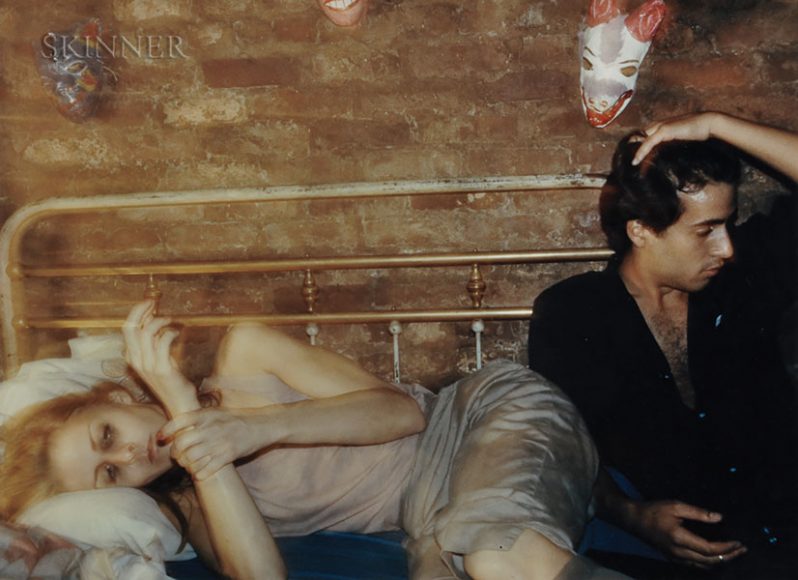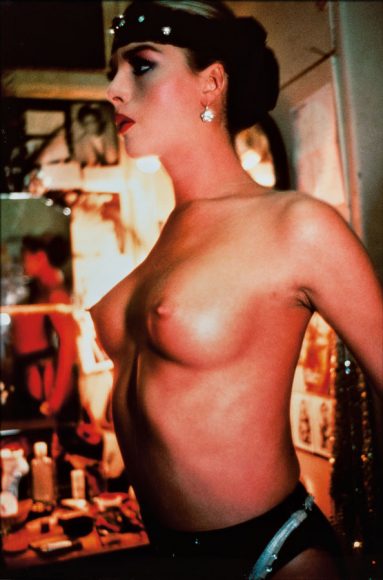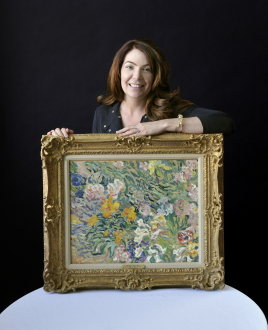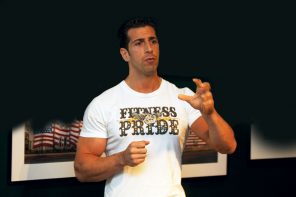Love, sex, romance, eroticism: They’re powerful, complex, universal, timeless forces. And they are arguably the most fundamental themes in art, constantly being reinterpreted and redefined.
Photographer Nan Goldin’s representations of these themes are groundbreaking in both style and substance. Her still-growing body of work unsparingly documents more than 50 years of social and cultural upheaval in ideas and expressions of love.
Goldin’s work, like that of all highly original artists, is sometimes controversial. Many consider it bold and fearless, depicting sexuality in all its variety. Others find many of her images, which often explore the culture of drug use as well, transgressive and disturbing. Goldin herself is bisexual and has a lifelong interest in and affection for those who define gender in both traditional and nontraditional ways.
Born in 1943 in a prosperous Boston suburb, Goldin’s childhood was profoundly marred by the suicide of her much-loved older sister when Nan was 11. A teacher at her progressive school introduced the young teen to photography with a Polaroid camera, which allowed her to document her world in snapshots — colorful, spontaneous, intimate. These qualities have remained hallmarks of the work that has brought her international acclaim.
Goldin studied photography at Boston’s School of the Museum of Fine Arts at Tufts University. In 1973, while still a student and working mostly in the now-discontinued Cibachrome process, she had her first solo exhibition. She moved to New York City in the late 1970s and immersed herself in the gay, New Wave music and drug subcultures.
Her intensely personal visual diary of the post-Stonewall, pre-AIDS scene resulted in a multimedia presentation, “The Ballad of Sexual Dependency.” The work, a 45-minute video of more than 800 slides with a soundtrack, including such diverse performers as Nina Simone, the Velvet Underground and Screamin’ Jay Hawkins, was presented at the Whitney Biennial in New York in 1985.
The ensuing critical acclaim established Goldin as a leading figure in contemporary photography, which was becoming increasingly respected, exhibited and collected as fine art. “The Ballad” was reworked and published in book form in 1986 and has subsequently been further reimagined and screened numerous times in the United States and abroad.
In the book, Goldin is quoted as saying “I want to show exactly what my world looks like, without glamorization, without glorification. This is not a bleak world but one in which there is an awareness of pain, a quality of introspection.”
Goldin’s themes and style have been immensely influential. One of the foremost exponents of the “snapshot aesthetic,” her observational approach is neither judgmental nor sentimental. She has said that her touchstone is honesty. While the resulting images are not often conventionally beautiful, they are powerful, immediate and uncompromising.
The artist has continued to explore and expand both subject matter and media. After working with slides and prints for many years, Goldin is increasingly engaging with cinema. She has created more multimedia installations such as 2006’s DVD “Chasing a Ghost,” revisiting the theme of memory and combining documentary with self-examination.
She has produced additional book projects, including the recent “Eden and After,” images of the many aspects of childhood, and “Diving for Pearls,” which juxtaposes artworks from great museums with Goldin’s photographs of friends in echoing poses.
Her exploration of media has also continued, from Polaroid snaps, to Cibachrome slides and prints to film. She claims no interest in digital photography and disavows any causal connection between her work and the rise of the Instagram selfie. She is currently exploring another fine art form — painting.
The artist’s subject matter has broadened. Friends, lovers and extended family are still the cornerstones of her exploration of the varieties of human relationships, but since the mid-1990s her work has come to encompass city skylines, landscapes and commercial fashion photography.
Goldin’s involvement in social issues has deepened, too. Unflinching examination of sexual violence and drug dependency were concerns in early work and expanded into advocacy for AIDS victims. That disease claimed many of her friends in New York City, frequent subjects of her photography in the 1970s and ’80s.
In 2017, Goldin revealed that she was recovering from three years of opioid addiction. This developed after she was prescribed OxyContin for a painful wrist injury that continues to limit her hand function. She has organized a group called P.A.I.N., Prescription Addiction Intervention Now, to demand that Purdue Pharma, the developers of OxyContin, fund addiction education and treatment programs.
Goldin’s geographic boundaries have also expanded. She lives and works in London, Germany, and France as well as New York. She continues to explore the world around her as she creates new chapters in the multimedia diary that is, literally, her life’s work.
For more, contact Katie at kwhittle@skinnerinc.com or 212-787-1114.






